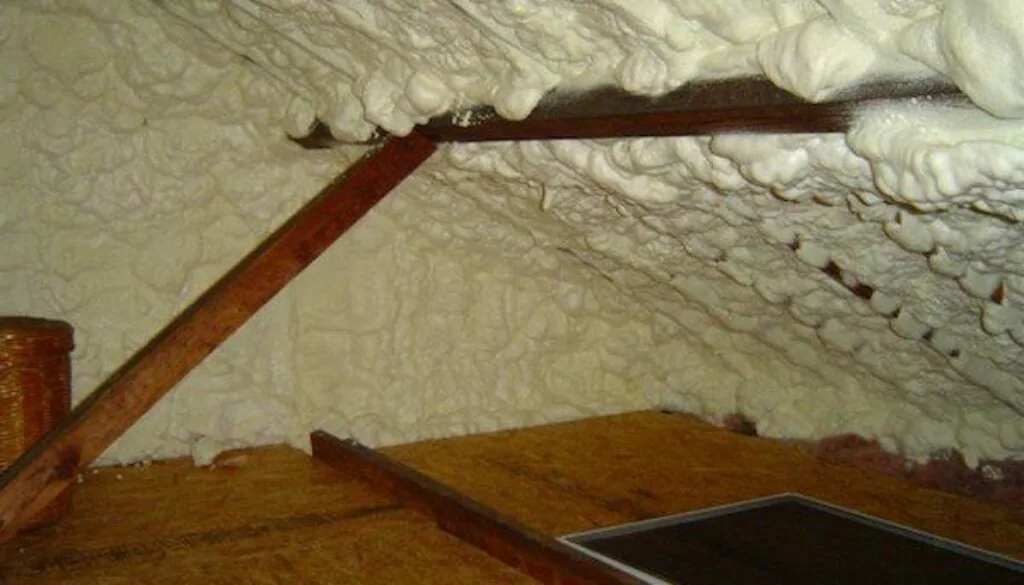The use of spray foam on attic ceilings has become a game-changer in the realm of home insulation. Homeowners seeking energy-efficient solutions are turning to this innovative method to enhance insulation and reduce energy costs. In this comprehensive guide, we’ll delve into the world of “Spray Foam on Attic Ceiling,” exploring its benefits, installation process, and why it’s gaining popularity among savvy homeowners.

Understanding Spray Foam on Attic Ceiling
What is Spray Foam Insulation? Spray foam insulation is a cutting-edge material renowned for its exceptional thermal resistance properties. When applied to the attic ceiling, it creates a seamless barrier that prevents heat loss or gain, resulting in a more comfortable and energy-efficient home.
Advantages of Using Spray Foam on Attic Ceilings
1. Improved Energy Efficiency:
The primary advantage lies in its ability to seal every nook and cranny, leaving no room for air leaks. This tight seal significantly reduces the workload on your heating and cooling systems, leading to lower energy bills.
2. Enhanced Comfort:
Spray foam provides consistent insulation, ensuring a more comfortable living space year-round. Say goodbye to cold spots in winter and sweltering areas in summer – enjoy a balanced indoor temperature.
3. Moisture Control:
Unlike traditional insulation materials, spray foam is resistant to moisture. This prevents the growth of mold and mildew, safeguarding your home’s structural integrity.
4. Longevity and Durability:
Once applied, spray foam can last for several decades without losing its effectiveness. It adheres firmly to surfaces, providing a durable and long-lasting solution for your attic insulation needs.
The Installation Process: Spray Foam on Attic Ceiling
- Preparation: Before application, the attic space is thoroughly inspected for any existing issues. Repairs are made, and the area is prepped for the spray foam installation.
- Application: Professional installers use specialized equipment to apply the spray foam evenly across the attic ceiling. The foam expands to fill gaps and creates a seamless barrier.
- Curing: After application, the foam undergoes a curing process, during which it hardens and forms a protective layer. This process is relatively quick, allowing homeowners to enjoy the benefits promptly.
Read too: Is Bathroom Ceiling Mold Dangerous to Your Health and Home? Unveiling the Threat
Common Concerns and Solutions
1. Cost Considerations:
While the initial cost of spray foam insulation may be higher than traditional options, its long-term energy savings often outweigh the upfront investment.
2. DIY vs. Professional Installation:
While some may consider a DIY approach, professional installation is recommended for optimal results. Trained experts ensure proper application and adherence to safety standards.
Conclusion
In conclusion, the application of spray foam on attic ceilings is a wise investment for homeowners seeking to enhance energy efficiency and overall comfort. The benefits, including improved insulation, moisture control, and durability, make it a popular choice in the realm of home improvement. If you’re contemplating ways to upgrade your home’s insulation and reduce energy costs, considering spray foam on your attic ceiling is a step in the right direction. Embrace the future of insulation and transform your attic into a well-insulated space that contributes to a more sustainable and cost-effective home.